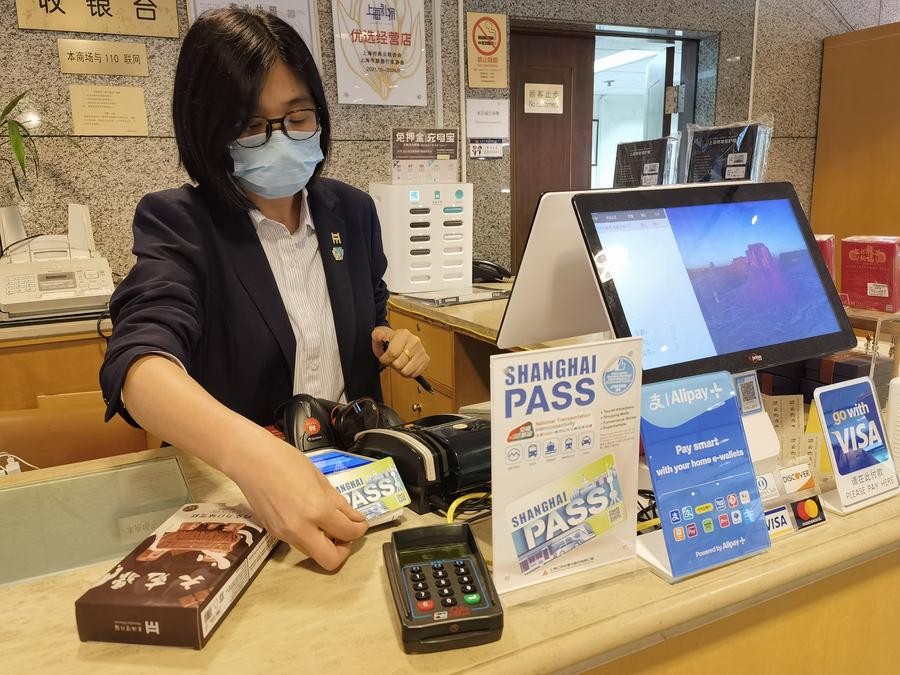BEIJING, June 13 (Xinhua) -- Since the beginning of this year, the popularity of inbound tourism has been on the rise, with a noticeable increase in the number of foreign tourists coming to China.
"Recently, I have been shuttling between the famous historical sites in Beijing every weekend, hosting tourists from the Netherlands, Switzerland, Japan, the United States, Poland, and many other countries," said Mr. Fang, who works part-time as a tour guide proficient in Chinese, English, and French, to a reporter from China Securities Journal.
Experts have stated that the implementation of a series of visa-free policies, coupled with the optimization of payment services, has enhanced the tourism convenience for overseas visitors. With more favorable policies taking effect, the country are witnessing promising prospects for the inbound tourism market.
-- China's strong appeal as overseas tourist destination
On June 10, Chinese leading travel service provider Ctrip released a report on travel trends during the Dragon Boat Festival this year, which showed that Chinese traditional folk customs have attracted many foreign tourists to experience the festival, with a significant year-on-year increase of 115 percent in bookings for inbound tourism.

Contestants participate in a dragon boat race on Songhua River in Jilin City, northeast China's Jilin Province, June 10, 2024. (Xinhua/Yan Linyun)
Early on June 9, in front of the Hall of Prayer for Good Harvests at the Temple of Heaven in Beijing, tourists had already formed long queues.
"Our family had planned to visit China for a long time, and Beijing is our first stop. We will also go to Xi'an and Shanghai, and we plan to stay here for a total of two weeks," said Mr. Chen from Singapore, who asked the reporter to take a group photo for his family in front of the red walls of the Temple of Heaven.
"Yesterday, we visited the Forbidden City and the Summer Palace, which were very impressive. I have always wanted to see the Terracotta Army in Xi'an. This will be a rich journey into Chinese culture," Mr. Chen told the reporter.
Currently, China's natural scenery and cultural history still have a strong appeal to overseas tourists, said Dai Bin, dean of China Tourism Academy who also added that new landmarks such as Daxing Airport, Beijing CBD, Guangzhou Tower, Beijing-Shanghai High-Speed Railway, Pudong New Area, and the Hong Kong-Zhuhai-Macao Bridge, along with the Forbidden City, Terracotta Army, Yin Ruins, and Liangzhu Site, have become new carriers for showcasing the national tourism image.
Li Mengran, media relations manager of the Utour Group, further stated that July and August will be the high time for the inbound tourism market. "Every summer vacation is the longest tourist season of the year. The Christmas holiday, New Year's Day holiday, and the Easter holiday in April are also important times for inbound tourism," Li said.
-- Multiple policies for foreign travelers' convenience
Behind the strong recovery of inbound tourism is the gradual resolution of various challenges, including visas and payment services.
China has decided to extend the visa-free policy for short-term visits to China for 12 countries until the end of 2025, so as to promote exchanges between Chinese and foreign nationals.
The extended policy allows ordinary passport holders of France, Germany, Italy, the Netherlands, Spain, Malaysia, Switzerland, Ireland, Hungary, Austria, Belgium, and Luxembourg, to enter and stay in China visa-free for up to 15 days for business, tourism, visiting relatives and friends, and transit.
Data from the Ctrip platform shows that since 2024, the order volume of tourists from the 12 countries coming to Chinese mainland has increased by 341 percent year on year.
Among them, the highest number of inbound tourists are from Malaysia, Germany, France, Italy, and the Netherlands. The order volume for inbound tourism from Malaysia has increased by 485 percent year on year while Germany has seen a 223 percent increase, and France has a 273 percent increase.
At present, citizens from 54 countries including the United States, Canada, Australia, New Zealand, South Korea, and Japan are exempted from visa requirements during transit for 72 or 144 hours when heading for a third nation, according to the National Immigration Administration (NIA).

A clerk processes a payment with a shopper's Shanghai Pass multipurpose prepaid travel card at the gift shop of Shanghai Museum in east China's Shanghai Municipality on May 22, 2024. (Xinhua/Chen Aiping)
Besides, China enforced a policy on May 15 that tourist groups each consisting of two foreigners or more, and organized or received by Chinese travel agencies, can enter China visa free on board cruise ships via the cruise ports in 13 Chinese cities, including Shanghai, Tianjin, Guangzhou and Sanya, according to the NIA.
The Ctrip Research Institute stated that the visa-free policy has resolved the visa difficulties for many overseas visitors and provided policy support for inbound visitors.
In its latest efforts to facilitate ease of payments for overseas travelers, Beijing, Shanghai and other Chinese authorities also introduced measures to make payments more accessible for foreigners visiting the country's major tourist attractions.
-- Surging number of cross-border flights
The further recovery of inbound tourism is also inseparable from the increase in the number and density of international flights.
It is expected that the cross-border passenger flights will exceed 3,800 trips during the Dragon Boat Festival holiday, up 72 percent year on year, according to data from the civil aviation platform Umetrip.
Many airline companies continue to increase international air routes and the number of flights.

Tourists are pictured on their way to Shanghai Museum in east China's Shanghai Municipality on May 22, 2024. (Xinhua/Chen Aiping)
Starting from June 1, Air China has added a daily flight route from Beijing to London, bringing the total number of weekly round trips linking China and UK to 62.
China Southern Airlines resumed the Kathmandu-Guangzhou round-trip flights on June 1, operating flights on Tuesdays and Saturdays from June 1 to July 15 and daily flights starting from July 16.
Xiamen Airlines will also resume the Quanzhou-Singapore route from June 24, with one flight each on Mondays, Wednesdays, Fridays, and Sundays.
This year, the Civil Aviation Administration of China (CAAC) will continue to focus on increasing international passenger flights, improve the international air route network, and facilitate the exchange of Chinese and foreign personnel, said Xu Qing, deputy director of the Transportation Department of CAAC.
(Edited by Tian Shenyoujia with Xinhua Silk Road, tianshenyoga0524@163.com)




 A single purchase
A single purchase









